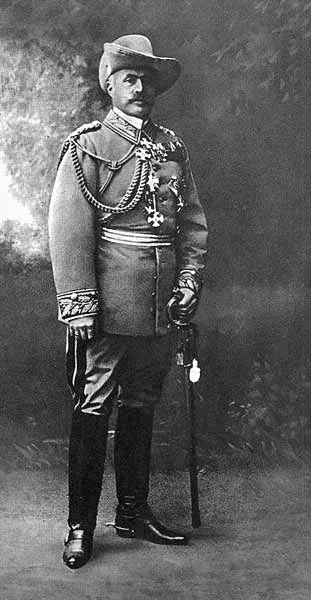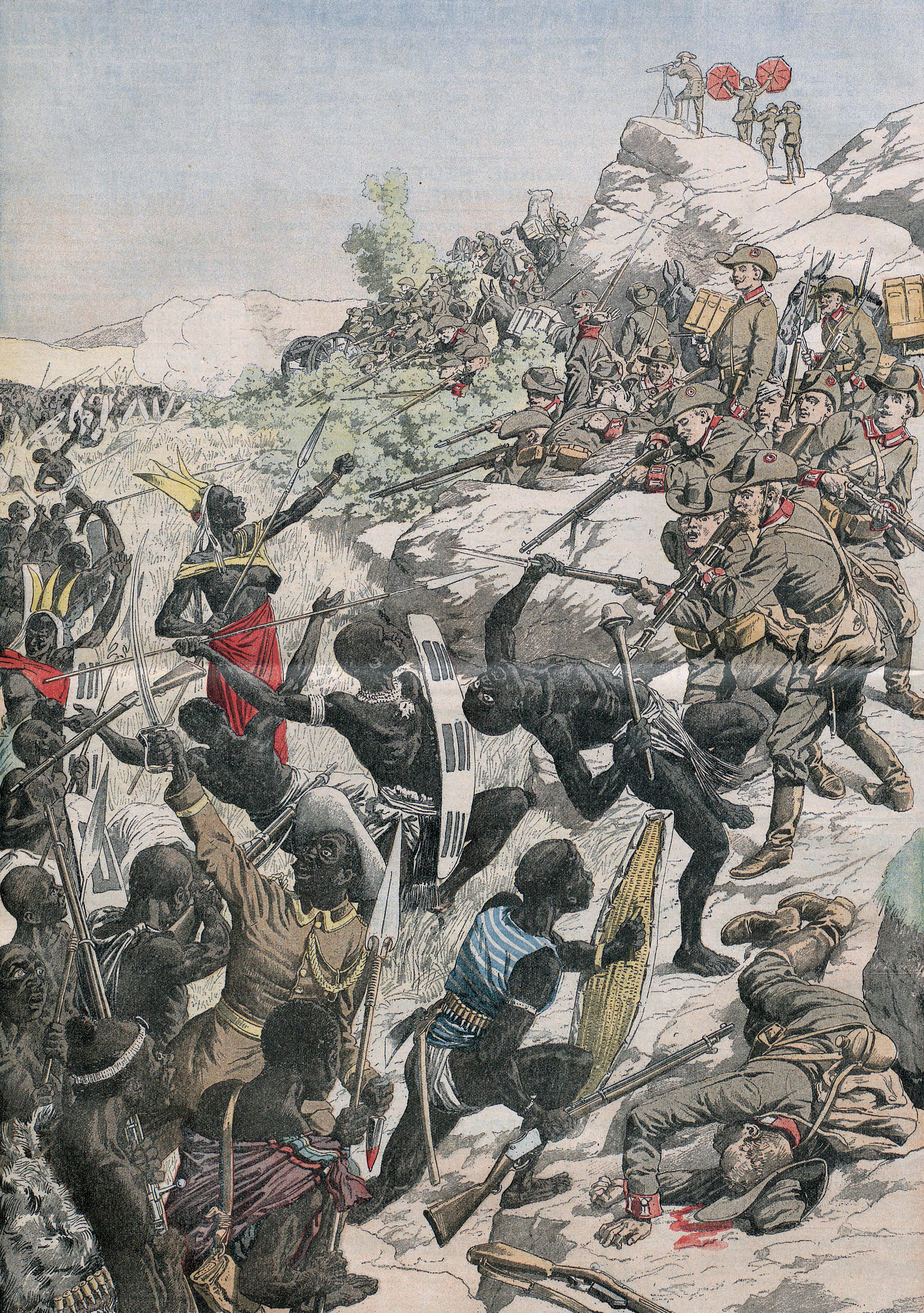|
Khaua-Mbandjeru Rebellion
The Khaua-Mbandjeru rebellion was an uprising of Africans in German South West Africa which took place in 1896. The rebellion preceded the Herero and Namaqua Genocide, which began around 1904.Bridgman, Jon M. (1981''The Revolt of the Hereros'', p.74 California University Press In 1894, Theodor Leutwein was appointed the commissioner of German South West Africa. One of his tasks was to establish German authority throughout the colony. This task interfered with the tribal organization of local peoples. Shortly before this, a German trader was found murdered in the territory of Khauas Nama around Naosanabis (today's Leonardville). When Curt von François, the predecessor of Leutwein, demanded the murderer be handed over to the German authorities, the Khaua chief, Andreas Lambert Andreas Lambert, also known as Andries Lambert ( Nama name: ǃNanib), (ca. 1844 – 8 March 1894) was the second Kaptein of the Kaiǀkhauan ( Khauas Nama), a subtribe of the Orlam, in the eastern are ... [...More Info...] [...Related Items...] OR: [Wikipedia] [Google] [Baidu] |
German South West Africa
German South West Africa (german: Deutsch-Südwestafrika) was a colony of the German Empire from 1884 until 1915, though Germany did not officially recognise its loss of this territory until the 1919 Treaty of Versailles. With a total area of 835,100 km², it was one and a half times the size of the mainland German Empire in Europe at the time. The colony had a population of around 2,600 Germans. German rule over this territory was punctuated by numerous rebellions by its native African peoples, which culminated in a campaign of German reprisals from 1904 to 1908 known as the Herero and Namaqua genocide. In 1915, during World War I, German South West Africa was invaded by the Western Allies in the form of South African and British forces. After the war its administration was taken over by the Union of South Africa (part of the British Empire) and the territory was administered as South West Africa under a League of Nations mandate. It became independent as Namibia on 21 ... [...More Info...] [...Related Items...] OR: [Wikipedia] [Google] [Baidu] |
Herero And Namaqua Genocide
The Herero and Namaqua genocide or the Herero and Nama genocide was a campaign of ethnic extermination and collective punishment waged by the German Empire against the Herero (Ovaherero) and the Nama in German South West Africa (now Namibia). It was the first genocide of the 20th century, occurring between 1904 and 1908. In January 1904, the Herero people, who were led by Samuel Maharero, and the Nama people, who were led by Captain Hendrik Witbooi, rebelled against German colonial rule. On January 12, they killed more than 100 German settlers in the area of Okahandja, although women, children, missionaries and non-German Europeans were spared. In August, German General Lothar von Trotha defeated the Ovaherero in the Battle of Waterberg and drove them into the desert of Omaheke, where most of them died of dehydration. In October, the Nama people also rebelled against the Germans, only to suffer a similar fate. Between 24,000 and 100,000 Hereros and 10,000 Nama died in the g ... [...More Info...] [...Related Items...] OR: [Wikipedia] [Google] [Baidu] |
Theodor Leutwein
Theodor Gotthilf Leutwein (9 May 1849 – 13 April 1921) was colonial administrator of German Southwest Africa from 1894 to 1904 (as commander of its Schutztruppe, and from 1898, governor). Life and career Born in Strümpfelbrunn in the Grand Duchy of Baden, he joined the Prussian Army in 1868. Following several promotions he achieved the rank of major in 1893. In 1894 he replaced Curt von François as commander of the Schutztruppe (Imperial Security Troop). His personal goal in German Southwest Africa was to create "colonialism without bloodshed". During his tenure there, Leutwein created a decentralized administration with three regional centers (Windhoek, Otjimbingwe and Keetmanshoop). The construction of the first railroad between Windhoek and the seaport of Swakopmund was built during his rule. In 1899 he was promoted to lieutenant colonel, rising to the rank of colonel in 1901. [...More Info...] [...Related Items...] OR: [Wikipedia] [Google] [Baidu] |
Leonardville, Namibia
Leonardville is a village in Omaheke Region in eastern Namibia. It belongs to the Aminuis electoral constituency. The place normally receives an annual average rainfall of , although in the 2010/2011 rainy season were measured. Leonardville was the main settlement of the Khaiǁkhaun (Khauas Nama) subtribe of the Oorlam people until their military defeat against Imperial Germany's ''Schutztruppe'' soldiers in 1894 and 1896. History The area around Leonardville was inhabited by the Taa-speaking subtribe of the San people until the Khaiǁkhaun (Red Nation), who called the place ''Naosanabis'', occupied their land. Around 1840 the group around Amraal Lambert, first Kaptein of the Kaiǀkhauan Orlam, moved into the area. They had been granted residence and pasture in the land of the Red Nation against an annual fee. In 1843 the Wesleyan Missionary Society established a missionary station here; its first missionaries were Joseph Tindall and his son Henry. They named the settle ... [...More Info...] [...Related Items...] OR: [Wikipedia] [Google] [Baidu] |
Curt Von François
Curt Karl Bruno von François (2 October 1852 – 28 December 1931) was a German geographer, cartographer, Schutztruppe officer and commissioner of the imperial colonial army of the German Empire, particularly in German South West Africa (today's Namibia) where he was responsible on behalf of Kaiser for the foundation of the city of Windhoek on 18 October 1890 and the harbor of Swakopmund on 4 August 1892. Life François was born in Luxembourg of French Huguenot ancestry. He was the son of Prussian general Bruno von François, who was killed in the battle of Spicheren. Curt's younger brother Hermann von François (1856–1933) served as a general in World War I and was one of the key contributors to the German victory at the 1914 Battle of Tannenberg. The writer Louise von François was his aunt. Like his ancestors, young Curt von François joined the Prussian Cadet Corps. He served as a soldier in the Franco-Prussian War of 1870–71, whereby his father was killed in actio ... [...More Info...] [...Related Items...] OR: [Wikipedia] [Google] [Baidu] |
Andreas Lambert
Andreas Lambert, also known as Andries Lambert ( Nama name: ǃNanib), (ca. 1844 – 8 March 1894) was the second Kaptein of the Kaiǀkhauan ( Khauas Nama), a subtribe of the Orlam, in the eastern area of South-West Africa, today's Namibia. In the 1860s the Kaiǀkhauan were severely weakened in their political and economic power. Their cattle died of lung disease, and smallpox befell the Nama community at Gobabis, including much of the Lambert family. After his grandfather Amraal Lambert died from this disease in 1864, Andreas took over the chieftainship from him and became the leader of the Kaiǀkhauan at the age of 20. Under his leadership the clan regained its former fame in trade and cattle theft. He opposed the settlement of South African farmers, threatening to chase them away by force. Those Trekboere were in search of political independence from British occupation of the Cape Colony and had ventured into his community's area during their Dorsland Trek. Lambert also wo ... [...More Info...] [...Related Items...] OR: [Wikipedia] [Google] [Baidu] |
New Era (Namibia)
The ''New Era'' is a daily national newspaper owned by the government of Namibia. The newspaper is one of four daily national newspapers in the country, the others being ''The Namibian'' (English and Oshiwambo), ''Die Republikein'' (Afrikaans) and '' Allgemeine Zeitung'' (German). ''New Era'' was created by the ''New Era Publications Corporation Act of 1992''. According to Ullamaija Kivikuru, it copied the format of ''The Namibian'' in order to establish credibility. The two newspapers still resemble each other in having long stories spread over several pages. ''New Era'' has a usual circulation of 9,000, going up to 11,000 on Fridays.Rothe, ''Media System and News Selections in Namibia'', p. 23. It was established as a weekly newspaper and was later published only bi-weekly. It has appeared daily since 2004. ''New Era'' is published in English and five indigenous languages: Otjiherero, Oshiwambo, Damara/Nama, Silozi, and Khwedam. ''New Era'' is published by the New Era Public ... [...More Info...] [...Related Items...] OR: [Wikipedia] [Google] [Baidu] |
Bondelswarts
The Bondelswarts are a Nama people, Nama ethnic group of Southern Africa living in the extreme south of Namibia, in an area centred on the town of Warmbad, Namibia, Warmbad.''Big Swords, Jesuits, and Bondelswarts'', John S. Lowry, p.64 History They rose up against German colonial rule in the Herero and Namaqua genocide, Nama War 1903-1906. They were brutally repressed. They inhabit an arid region around Fish River Canyon and the Richtersveld. In 1922 they were involved in the Bondelswarts Rebellion, a revolt against a tax on dogs, which was violently repressed. References Notes Further reading * * John S. Lowry, ''Big Swords, Jesuits, and Bondelswarts'', 2015. * Brian Wood, ''Namibia 1884-1984: Readings on Namibia's History and Society'', Namibia Support Committee, United Nations Institute for Namibia, 1988 * Alfred T. Moleah, ''Namibia, the Struggle for Liberation'', 1983 * Dean McCleland, ''John Dunn: Part 1 – Background to the Bondelswarts People & the SAC' Na ... [...More Info...] [...Related Items...] OR: [Wikipedia] [Google] [Baidu] |
Herero Wars
The Herero Wars were a series of colonial wars between the German Empire and the Herero people of German South West Africa (present-day Namibia). They took place between 1904 and 1908. Background Pre-colonial South-West Africa The Hereros were cattle grazers, occupying most of central and northern South West Africa. Under the leadership of Jonker Afrikaner, who died in 1861, and then later under the leadership of Samuel Maharero, they had achieved supremacy over the Nama and Orlam peoples in a series of conflicts that had in their later stages, seen the extensive use of fire-arms obtained from European traders. German colonization In the early 1880s, the German statesman Otto von Bismarck, reversing his previous rejection of colonial acquisitions, decided on a policy of imperial expansion. In 1882 Bismarck gave permission to Adolf Lüderitz to obtain lands which Germany would bring within its "protection", under the conditions that a port was established within the territorie ... [...More Info...] [...Related Items...] OR: [Wikipedia] [Google] [Baidu] |
Max Planck Society Archive
The Max Planck Society for the Advancement of Science (german: Max-Planck-Gesellschaft zur Förderung der Wissenschaften e. V.; abbreviated MPG) is a formally independent non-governmental and non-profit association of German research institutes. Founded in 1911 as the Kaiser Wilhelm Society, it was renamed to the Max Planck Society in 1948 in honor of its former president, theoretical physicist Max Planck. The society is funded by the federal and state governments of Germany. Mission According to its primary goal, the Max Planck Society supports fundamental research in the natural, life and social sciences, the arts and humanities in its 86 (as of December 2018) Max Planck Institutes. The society has a total staff of approximately 17,000 permanent employees, including 5,470 scientists, plus around 4,600 non-tenured scientists and guests. The society's budget for 2018 was about €1.8 billion. As of December 31, 2018, the Max Planck Society employed a total of 23,767 staff, of w ... [...More Info...] [...Related Items...] OR: [Wikipedia] [Google] [Baidu] |





.jpg)